… from the Wychwoods Albums Archive
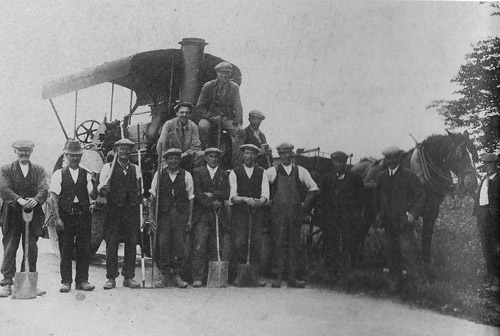
The Act of Disafforestation of Wychwood Forest was signed on 7 July 1853, and between October 1856 and January 1858 large tracts of the forest were cleared and a network of roads laid out. These remained dirt roads until the road from Finstock was the first to be macadamised at the time of this photograph. Many of the men are ‘Field-towners’ including Fred Wiggins, Fred Williams, and Fred Pratley.
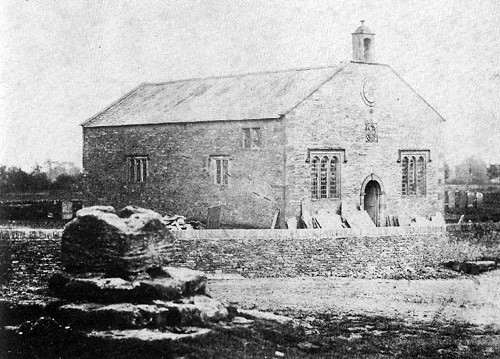
Although part of Shipton parish, Leafield had its own chapel from at least 1591 when Sir Henry Unton of Bruern gave a chapel and chapelyard, cottages and land, to feofees in Leafield. Burials still had to take place at the mother church in Shipton until permission for a burial ground was granted in 1831. The chapel is shown as it stood from 1822-1859 when it was pulled down to allow a bigger church to be erected next to it.
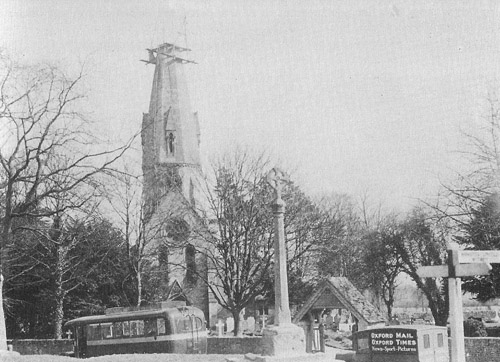
The foundation stone of the present church was laid on All Saints’ Day, 1858, by Lady Churchill. Within five years, the spire had been damaged by severe weather and a smaller, lighter one was erected.
In 1934 it was again damaged, it is thought by lightning, and the top third was shortened and the gradient of the spire altered. For all its problems, the spire remains a notable landmark, visible for many miles. The old village cross can also be seen in both photographs; in the one of the old chapel as just a base and in the other after restoration in 1873 ‘as a memorial for their deliverance from the scourge of smallpox’. The lychgate was erected as the village memorial to the 20 men of Leafield who died in the First World War.
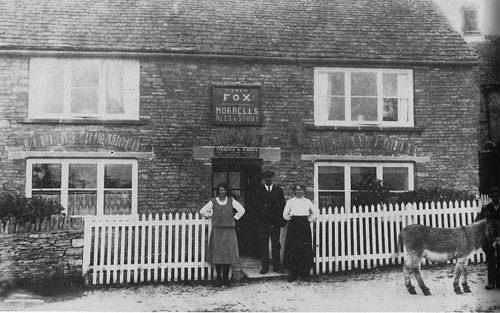
Mr and Mrs Widdows outside the Fox, probably shortly after becoming tenants, with Mr Fred Williams the ‘donkey-man’. Fred Williams had a crippled leg and used the donkey to help him get about.
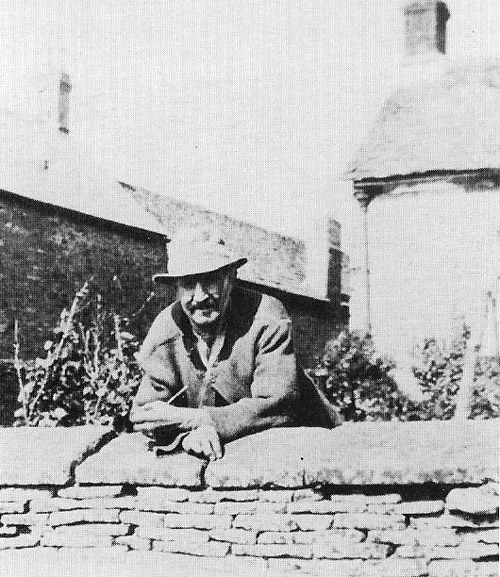
Fred Williams ‘the donkey-man’ and great-grandfather of Doreen Dore, was the last of the Leafield potters. The Williams family, who came from Llanelly in the nineteenth century, started the pottery in Witney Lane but by 1861 had moved to Chimney End, behind the Fox inn. In 1895, the pottery was taken over by Groves who continued to make land-drains, tiles and bricks there until about 1920.
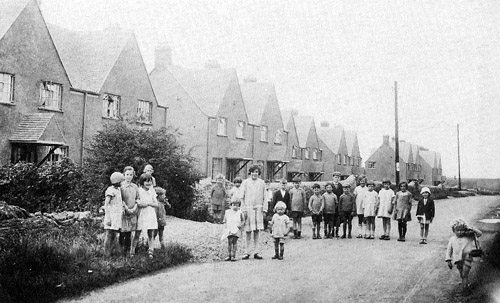
The council houses in Leafield were built just before those in Pear Tree Close, Milton. Mervyn Dore, the little boy carrying his lunch bag to school on the right of the picture, remembers that he and his family left their house behind the Fox Inn to move into one of the new houses in Pear Tree Close, only to find when they got there that the house was let to someone else and they were homeless.

Leafield always had a problem with a good water supply in summer and there are references to water being collected by buckets from springs in the forest. In 1927 J. F. Maddox made a gift of a spring in Shipton which was piped to Leafield. The pond on the green was filled in in the late 1950s.
This is one of series of snapshots taken from the Society’s publications “The Wychwoods Albums”. These publications from the mid to late 1980s feature a variety of images of the Wychwoods, all of which deserve a place in our expanding online archive.
Select from:
WW1 Wychwoods Military | WW1 Wychwoods Memorabilia | Shipton WW1 Miscellany | St Michael’s Shipton Early 1900s | Early Prebendal Scenes| Shipton Court 1930s | Milton Scenes Early 1900s | Milton Social Activities | Farming Activities and People | Ascott Early 1900s | Leafield 1900s – 1930s | Fifield Residents Early 1900s | Idbury Early 1900s | Lyneham Miscellany| WW2 Evacuees | WW2 Wychwoods Home Front| WW2 Victory Celebrations|The First Wychwood Album

